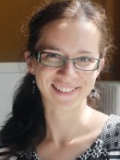Lenka Petkova

Lenka Petkova
Lenka Petkova has a master’s degree in European studies and a bachelor’s in international relations from the Comenius University in Slovakia. She spent part of her studies as an exchange student at Istanbul Kültür University in Turkey. For a few years, she worked in an Istanbul-based think-tank, managing projects aiming to support reconciliation and non-violent solutions to international conflicts through multi-track diplomacy, independent research, and informed debates in the media. Lenka has work experience in journalism and has received hands-on training at the European Commission, Directorate General for European Neighborhood Policy and Enlargement Negotiations.
- I joined the BrightnESS team at the very beginning of the project. After two years, we are approaching the stage when more and more results become visible and it’s exciting to see that happening. As an External Relations Officer, I am mostly involved in activities supporting stakeholder relations and enlargement of the ESS member base. To give an example, a delegation of Canadian neutron scientists visited ESS for exchanges concerning opportunities for cooperation. In close collaboration with the ESS Science Directorate, we organized a set of meetings between the delegation and ESS staff scientists and management, representatives of the Swedish and Danish ministries for science and research, neutron scientists from partner institutes and so on. A visit of this kind has usually many layers and requires coordination with various stakeholders. A typical day at work includes communication with neutron sources in Europe who have participated in our survey, consolidating data, coordinating hub activities, writing reports, and producing content for social media.
What I like most about BrightnESS is the international character of the project and the collaborative spirit among project partners. The project demonstrates that institutes based in different countries in Europe can achieve challenging goals when they work together.
Within Work Package 6, we have conducted several analytical studies to better understand scientific trends in neutron research carried out at European facilities, needs of industrial users, and the role of actors in the innovation ecosystem surrounding ESS. The key challenge will be to reflect the findings in relevant policies and implement them.
BrightnESS provides vital support to key technical and administrative activities during an important time – the construction of the ESS facility. The impact of BrightnESS will be long-term and visible well after the end of the project. The development of detectors and software, the setting up of collaborative frameworks, knowledge sharing in the area of in-kind, and outreach activities carried out during BrightnESS will generate benefits for the neutron user community for many years to come.

 is funded by the European Union Framework Programme for Research and Innovation Horizon 2020, under grant agreement 676548.
is funded by the European Union Framework Programme for Research and Innovation Horizon 2020, under grant agreement 676548.